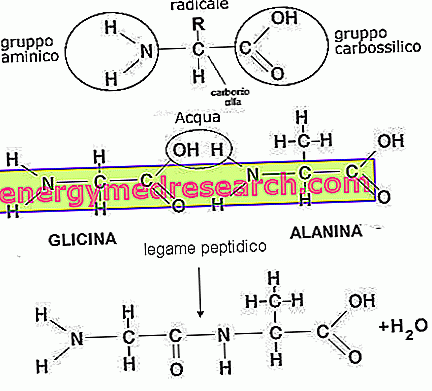CLOMID ® is a drug based on Clomiphene citrate
THERAPEUTIC GROUP: Antiestrogens - gonadotropins and other ovulation stimulants
IndicationsAction mechanismStudies and clinical effectiveness Usage and dosage instructionsWarnings Pregnancy and lactationInteractionsContraindicationsUndesirable effects
Indications CLOMID ® - Clomiphene citrate
CLOMID ® is used in the treatment of female infertility due to oligomenorrhea or secondary amenorrhea, as in the case of polycystic ovarian disease.
Mechanism of action CLOMID ® - Clomiphene citrate
The clomiphene citrate contained in CLOMID ® is a racemic mixture of cisclomifene and transclomifene, particularly effective in inducing ovulation in women with anovulatory cycles or with a reduced amount of luteinizing hormone.
The biological activity of this active principle is as complex given its dual activity, which can be summarized as:
- Weak estrogenic activity: useful to block the estrous cycle, as observed in different animal models;
- Important anti-oestrogenic activity: particularly valuable at the hypothalamic level, preventing "endogenous" estrogens from exercising negative feedback by depressing the expression of GnRH (gonadotropin-releasing hormone), then FHS (follicle-stimulating hormone) and LH (luteinizing hormone)
In other words, the intake of clomiphene citrate, by inhibiting estrogen blockade on the hypothalamus, stimulates the pituitary gland to secrete gonadotropins, which can initiate the correct process of follicular maturation at the ovarian level, and the subsequent ovulation induced by the increase of luteinizing hormone supported by the pre-ovulatory estrogenic peak.
Studies carried out and clinical efficacy
1. THE CLOMYPHENE CITRATED IN THE MALE HYPOGONADISM
Very interesting study that proposes the use of clomiphene citrate as an alternative to testosterone for the treatment of hypogonadism in young patients. The choice of clomiphene could be important to save the testicles from exogenous testosterone-induced atrophy.
2. CITRATE CLOMIFENE AND ACUTE MYELOID LEUKEMIA
Phase II pilot study demonstrating how clomiphene can help stabilize the clinical conditions of patients with acute myeloid leukemia by lengthening their survival, probably by inducing apoptosis of leukemia cells.
3. THE EFFECTIVENESS OF CITRATE CLOMIFENE
Despite the marketing of new antiestrogens such as tamoxifen, clomiphene remains the most effective active ingredient used as a first line therapy to induce ovulation in women with polycystic ovary syndrome.
Method of use and dosage
CLOMID ®
Tablets containing 50 mg of clomiphene citrate:
the dosing schedule for ovulation induction is as complex and strictly specialized.
In principle, remembering that it is up to the doctor to define the dosage and timing of the intake, the stimulation cycle could be started on the fifth day of the cycle by taking 50 mg of clomiphene citrate per day for 5 days.
In case of failed ovulation, the doctor could establish the repetition of new cycles with higher dosages, within the maximum limit of 100 mg daily for 5 days.
Warnings CLOMID ® - Clomiphene citrate
The specialized relevance of CLOMID ® administration reduces the potential side effects that would result from the disproportionate use of this drug.
More precisely, before starting the stimulation cycles, the patient should undergo a careful gynecological examination to assess the possible presence of conditions incompatible with the intake of clomiphene citrate or clinical pictures for which continuous medical supervision would be required.
In this regard it is useful to remember how the drug in question could lead to an enlargement of the cysts in ovaries affected by polycystic disease or of the ovaries in its entirety, thus requiring a suspension of treatment, also useful in the case of ovarian hyperstimulation, a condition characterized by abdominal or pelvic pain, weight gain and abdominal distension.
Statistical data describe how the incidence of twin pregnancies is more frequent in women undergoing ovarian stimulation.
CLOMID ® contains lactose therefore it is contraindicated in patients with galactose intolerance, lactase enzyme deficiency or glucose-galactose malabsorption.
The appearance of side effects on the visual apparatus, fogginess and opacification, could make the driving of vehicles or the use of machinery dangerous.
PREGNANCY AND BREASTFEEDING
Different experimental studies, conducted on animal models, have shown how the intake of clomiphene citrate during pregnancy, can determine the onset of fetal malformations, so serious as to compromise normal vital capacity.
It is also useful to remember how the intake of this active ingredient during lactation could inhibit milk production.
Interactions
At the moment, given also the short periods of treatment, active ingredients are not known, whose simultaneous intake with CLOMID ® could determine the onset of clinically relevant interactions.
Contraindications CLOMID ® - Clomiphene citrate
The use of CLOMID ® is contraindicated in women with menometrorrhagia, changes in liver function, pregnancy and lactation or in case of hypersensitivity to the active substance or one of its excipients.
Undesirable effects - Side effects
The short period of treatment useful to the induction of ovulation, allows to contain the side effects associated with the intake of clomiphene citrate.
However nausea, vomiting, constipation, diarrhea, abdominal discomfort, hot flushes, insomnia, increased tenderness with breast tenderness, are side effects observed during therapy with CLOMID ® but fortunately easily reversible once therapy is suspended.
In rare cases, clomiphene citrate intake has been associated with hypersensitivity reactions, including dermatological ones.
Note
CLOMID ® can be sold only under medical prescription.
The use of CLOMID ® outside of the medical prescription, before and during a sporting competition is forbidden constituting doping practice.



